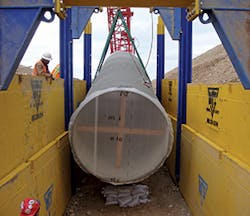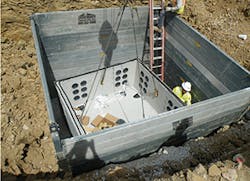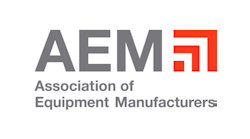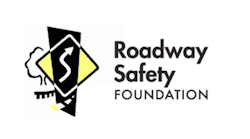Trench and excavation jobs remain some of the riskiest on construction sites across the United States. OSHA reports that an average of two construction workers are killed every month in trench collapses.
It’s little surprise, then, that OSHA lists a set of detailed rules governing the safety of excavation sites. According to the agency, trenches that are 5 feet deep or greater require some sort of protective system unless the excavation is made entirely in stable rock. Trenches that are20 feet deep or more require a protective system that is designed by a registered professional engineer.
OSHA also requires that employers inspect their trenches on a daily basis before workers descend into them.
The professionals working the shoring industry credit these rules in part with saving lives. But state and federal regulations can only go so far. Job sites, especially those featuring excavation work and trenches, will only remain safe if contractors are willing to take the steps necessary to protect those employees who do their work underground.
There is good news, though. Professionals in the shoring industry say that contractors are more sophisticated today when it comes to properly shoring their work sites. At the same time, the technology of shoring has improved, with companies manufacturing more efficient and powerful trench boxes, slide rail systems, and other shoring techniques.
It’s all combined to make underground work safer, though hardly risk-free.
“Shoring today is more of a science than it is a black art,” says Ron Chilton, president and chief executive officer of Houston-based National Trench Safety. “The contractors today are more sophisticated than the ones from 30 years ago. They don’t just want things done fast. They want them done fast and safe. Shoring is no longer an afterthought. It’s a key component of most projects’ design.”
This doesn’t mean that shoring is completely safe. OSHA reported that in 2013, trench collapses killed 30 workers in the United States.
The message is clear: Fatalities related to trench collapses are less common today than they were decades ago. But contractors must still take the necessary precautions to shore their job-site trenches properly.
Fortunately, they can work with the manufacturers of shoring systems today to boost the safety of construction crews working in even the deepest of trenches.
Safety Starts Early
Mike Ross, shoring specialist with the special operations shoring division of Mason, MI-based Efficiency Production, Inc., says that shoring safety should start early in the construction process.
How early? Before excavation work even begins, says Ross.
Ross recommends that contractors determine the most efficient way to dig and support their trenches during the bidding process for a job. Those contractors who disturb the least amount of earth on the job site will significantly reduce their odds of suffering through trench collapses.
Advance planning is the key to an efficient excavation, says Ross.
“When they start figuring the job, when they bid it, they need to find the most efficient way to do the job and move the least amount of dirt during it,” says Ross.
And even when contractors do this, underground work comes with real risk to workers. That’s why it is the duty of contractors to do everything possible to minimize this risk, says Ross.
“The number-one cause of fatalities or injuries on job sites is the cave-in,” says Ross. “There are a lot of variables to consider when figuring a job—everything from the size of a trench you’ll need to the material you are installing underground to the type of soil you are working with. The initial step, though, should always be to determine the most efficient way to get pipe into the ground and get dirt out. You want to get in and out of the ground as quickly as possible.”
This advance planning doesn’t have to be overly complicated, says Ross. Contractors laying pipe, for instance, have to determine how many feet of pipe they plan on installing each day of the project. They then have to determine how deep they need to install that pipe.
This gives contractors a good idea of how much shoring equipment they’ll need for what Ross calls the easier parts of a job.
Contractors who are installing 13-foot pipes 20 feet into the ground, for instance, might need three different types of trench boxes, one each for the bottom, middle, and top sections of their trenches.
Contractors can then identify the more difficult parts of their projects. This would include any sections with crossing utilities or deep structures such as lift stations. Contractors might have to boost their shoring efforts when working on these more complex areas of a project.
Fortunately, contractors have more choices when it comes to trench safety. Ross points to the challenging economy of recent years as a reason.
“In our business, unlike in other businesses, hard economic times drive ingenuity and different methods,” says Ross. “As long as there is lots of money to be made and lots of work, guys will keep doing things the way they always have. They’ll go with whatever has worked. When times are tougher, that’s when innovation happens.”
Why? When the economy is sluggish, and fewer construction projects are approved, contractors need to complete their jobs as efficiently as possible. If they don’t, they can’t make up for the inefficiency by simply taking on a greater number of jobs.
This holds true in the business of underground construction, too, says Ross.
“They want to move the least amount of dirt possible,” says Ross. “Contractors today are more interested in and seek out new technology or newer systems than they did during the boom times 10 or 15 years ago.”
In the underground construction business, this has meant a steady stream of improvements to the slide rail systems that companies such as Efficiency Production offer. Ross says that contractors are consistently asking for slide rail systems that can handle the shoring needs for ever-larger pits and trenches.
The slide rail systems are more cost-efficient than drive-in sheeting and other shoring methods, Ross says. Because of this, contractors benefit financially when they can use slide rails to shore up larger trenches, he says.
“When I first started in this business, a pit of 40 square feet or 50 square feet that was 20 or 30 feet deep was considered a big pit for a slide rail system,” says Ross. “Today, we are routinely doing slide rail pits that are 80 or 90 or even 100 feet. We have almost doubled the size of pits that slide rails can support. That technology and those improvements have been driven by contractors who are seeking alternative, less costly shoring methods.”
Improving . . . But Still Risky
It’s true that contractors today are more educated when it comes to underground safety. It’s true, too, that shoring products have become more dependable and effective.
But it’s also true that trench collapses still happen, and that underground work remains risky.
“This is an inherently dangerous business,” says Dennis Parker, products and training manager for Union City, MI-based GME, a company that manufactures trench protection systems. “But it is safer now. The major rental companies are offering free training seminars on federal shoring standards. There is a broader base of equipment available in the rental industry that wasn’t there just eight or 10 years ago. There is a lot more training for construction crews working in the trenches.”
The danger can be seen with a scan of headlines from 2014. In November of last year, a 32-year-old construction worker died in Bellville, OH, while installing sewer lines in a trench. In October, a 59-year-old construction worker was killed in a trench collapse in Grosse Pointe Woods, MI. In this incident, the victim—the owner of his own construction company—did not shore the sides of the trench before the collapse.
And in July of last year, a civilian contractor working at the Fort Bragg Army installation in North Carolina died in another trench collapse. The trench was 75 feet long and 15–18 feet deep.
Parker says that most trench collapses occur when contractors ignore state and federal regulations, or when they ignore the recommendations from the manufacturers of the slide rail systems or trench boxes that they are using.
Build-A-Box Modular Trench Shield System
Most of the country’s larger contractors follow these safety regulations closely, says Parker. They don’t want to face fines from OSHA or state agencies. But some of the smaller companies working on smaller jobs might not be as careful, says Parker.
“With some of the smaller companies, you are dealing with people who don’t have as much time in the field,” says Parker.
Even small companies today can choose from a wider variety of shoring materials to boost the safety of underground work, says Parker. No longer are contractors limited to one type of trench box designed to fit every hole or trench.
And rental companies today are more often than not staffed with professionals who understand the risk in trench work and how to best mitigate it, says Parker.
“There is equipment now that is more specific to particular jobs,” says Parker. “You can go to the rental company and describe your job site and the work you have to do. You can discuss your needs. The people contractors are dealing with at the bigger rental companies are usually trained and knowledgeable about excavation safety standards and OSHA requirements. They can offer the guidance and assistance that contractors need. They can help make it a safer excavation all around.”
Parker, like other professionals in the shoring industry, agrees that contractors can boost worker safety by analyzing the shoring needs of their job sites before actual construction work begins.
A good analysis starts at the most basic of levels: Are contractors working on a repair job of an existing building or site, or are they building something new from the ground up?
In most new-construction jobs in which crews are laying pipe, contractors can shore their trenches safely with standard steel trench shields, says Parker. Repair jobs, though, might require different equipment. Trenches might require three- or four-sided protection provided by some of the newer shoring products on the market, says Parker.
Contractors next need to consider the size of the machines doing the excavating work, says Parker. They want to make sure that their trench-shoring products can support this equipment safely. Contractors need to look, too, at the length of the pipe they are installing.
“The single biggest question that I need to ask contractors is this: ‘What are you doing?'” says Parker. “They can’t just say that they are putting pipe in the ground. They have to be able to tell me how deep that pipe is going. They have to tell me more about the application, about what the pipes are going to be used for. They have to tell me what equipment they are using on the job site. If you know the application, you can find the right product to fit their need.”
This can be a hassle for contractors. The vast majority of contractors want to keep their workers safe, and they will take the steps and buy the equipment necessary to do this. The problem? Contractors also want to make money. And sometimes the only way for them to remain profitable is to complete jobs as quickly as possible while still meeting the requirements of their clients.
The competitive nature of construction, and the increasing demand for speedy results from clients, can encourage contractors to skimp not on shoring their trenches, but on doing the pre-construction research necessary to find the right shoring product for specific job sites.
Chilton from National Trench Safety says that this research can make the difference between safe underground work and a trench that is at risk of collapse.
“There is so much for contractors to consider,” says Chilton. “They have to identify the soil conditions they are working with. They have to consider issues outside of the excavation itself, such as any type of loads that can come from buildings or adjacent structures, roads, or bridges. All of these considerations go into creating a safe underground-shored condition. It’s not just about contractors saying ‘I have to use a trench box or a vertical shore.’ It’s about picking the right tools for the right job. Very few jobs are identical today.”
“It’s still dangerous to put people below ground,” says Chilton. “You have to take the precautions to minimize that danger.”
The Magic Box?
It’s good, of course, that manufacturers like National Trench Safety offer a wider range of shoring products today. The increased choice makes it easier for contractors to boost the safety of their excavation work.
But all of this choice comes with a negative, too. It can be difficult for overwhelmed contractors to find the right shoring equipment for specific job sites.
“The majority of contractors—the vast majority—are putting shoring into their projects. They want to keep their sites safe. Unfortunately, there is not one product that fits every need,” says Parker. “I’ve told guys for years, the first person to invent a black box that when you drop it into a trench unfolds and does everything you need automatically, is going to be a millionaire instantly. But for now, there’s not one product that covers every excavation need.”
As Parker says, this black box does not exist. However, contractors do have resources if they want to learn more about the many shoring products available today: the companies that manufacture and rent these products.
Joe Cook, sales manager at Pro-Tec Equipment in Lansing, MI says that he has noticed more contractors searching out shoring advice from him and his fellow staffers. This is a positive development, he says. Pro-Tec, like other large companies that rent out shoring equipment, is staffed by knowledgeable workers who understand the business of shoring.
These staffers can help contractors analyze what Cook calls the big-five factors of a job—soil type, depth of the excavation, diameter of the pipe or size of the structure being installed, length of the pipe being installed and the machinery that contractors are using to maneuver their shoring equipment—to find the right shoring materials for their trench and excavation work.
“Underground work is absolutely getting safer,” says Cook. “The culture on job sites has changed quite a bit. It wasn’t that long ago when you didn’t even see safety vests and hard hats on every job site. When I first started out, guys were wearing shorts and gym shoes on job sites. There has been a cultural shift. And that shift hasn’t happened in just personal protection. It’s happened with trench shoring, as well.”
The rental side of the shoring business is busier than ever, says Cook. That’s why it’s so important that rental companies are increasingly staffed with professionals who understand which pieces of shoring equipment fit with which jobs.
More than ever, contractors are relying on rental companies such as Pro-Tec to educate them on the safety requirements connected to trench work, says Cook.
Cook says that he expects rental business to continue to increase during the years. State and federal agencies are increasingly focused on worker safety. And many states—including always-busy California—require contractors to include shoring information when they are bidding for jobs that require underground work.
Rental companies provide contractors with the flexibility they need to acquire the right shoring equipment for each excavation job they tackle, says Cook.
At the same time, construction work itself, including underground work, is becoming more specialized. This means that a greater number of trench jobs require equipment that is very specific to that one job site.
“Jobs are getting more specific all the time,” says Cook. “There is a lot of rehabilitation work going on now, too. Every job requires different strategies and equipment. Rather than making the big investment of purchasing shoring equipment for a single job, it is more cost-effective for contractors to rent that equipment. Renting in the right circumstances is more cost-effective than actual ownership. The continued specialization of jobs has really driven the rental market.”
Cook and other shoring experts agree that contractors will have to continually educate themselves on what products will give them the safest job sites.
Not only are jobs more complex than ever, but contractors today have to choose from a wider variety of construction materials to complete these jobs. And these varied materials can often require different types of shoring products.
Cook points to the vast number of pipe products available today. Contractors might work with 13- to 14-foot sanitary sewer pipes. These pipes typically need to be installed deeper in the ground, so they might require more intense shoring. Contractors might work with a water-main pipe, a pipe that is longer—often 20 feet long. These pipes might be longer, but are typically installed at shallower depths, so the shoring needs might be lesser.
Contractors might also work with storm sewer pipes that are made of concrete and have a larger diameter. These pipes will require different shoring measures than either sanitary or water-main pipes.
And that’s just a small example of the wide variety of equipment with which contractors are working today.
“It used to be much simpler. There were only a few types of pipe,” says Cook. “But as the pipe industry evolves, our industry will have to evolve, too. We’ll have to continue to offer products that meet the needs of any type of job site our contractors are working on.”



